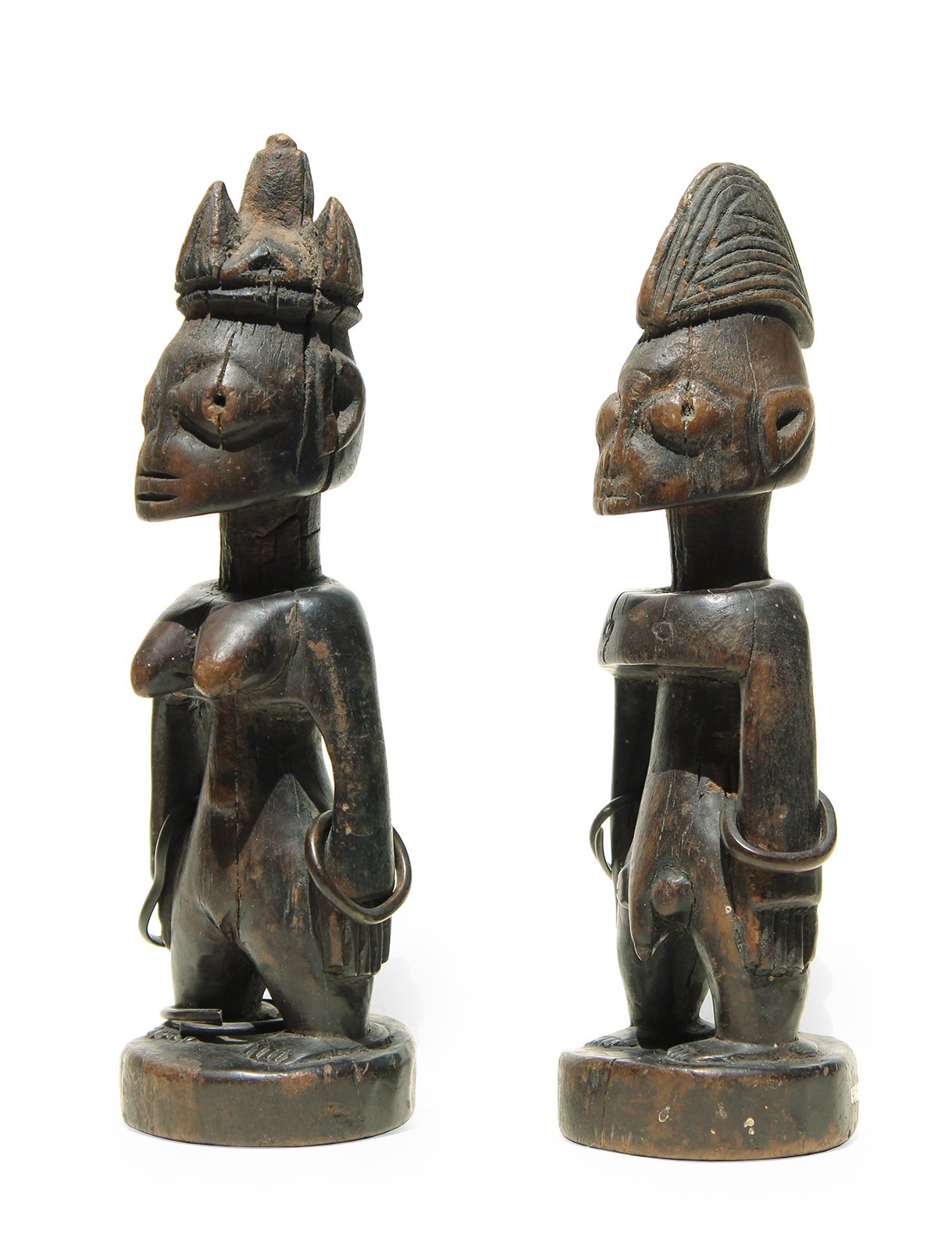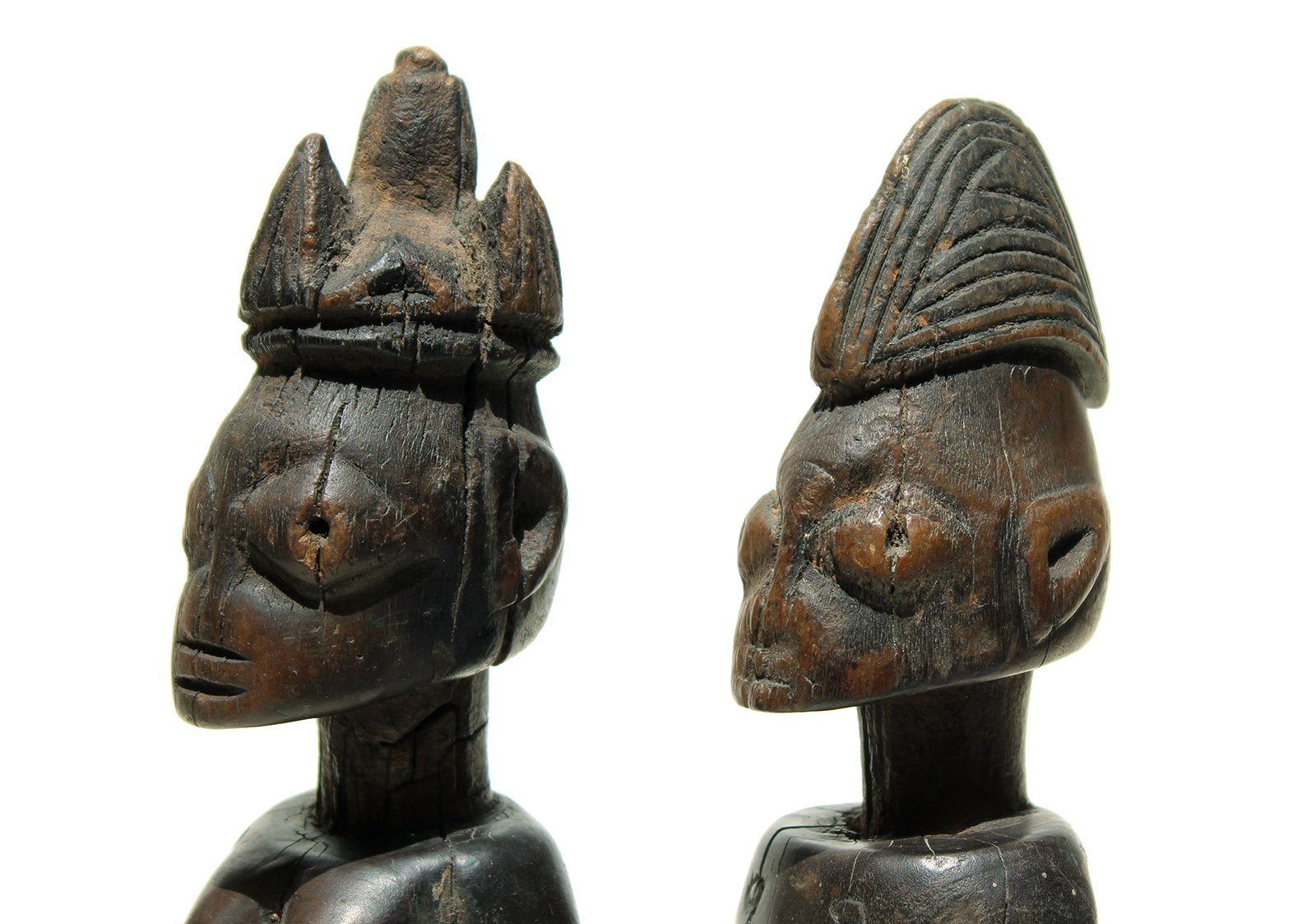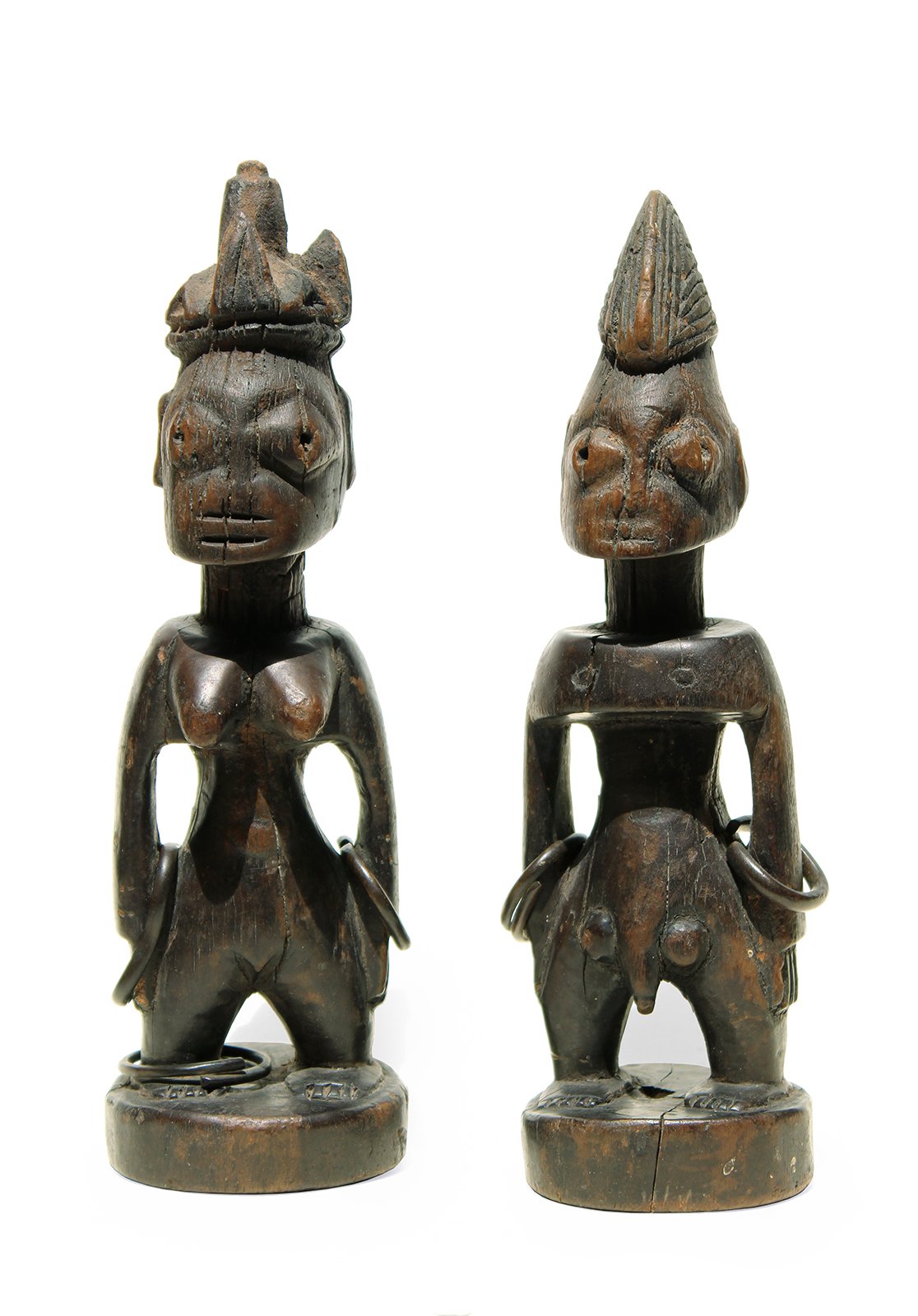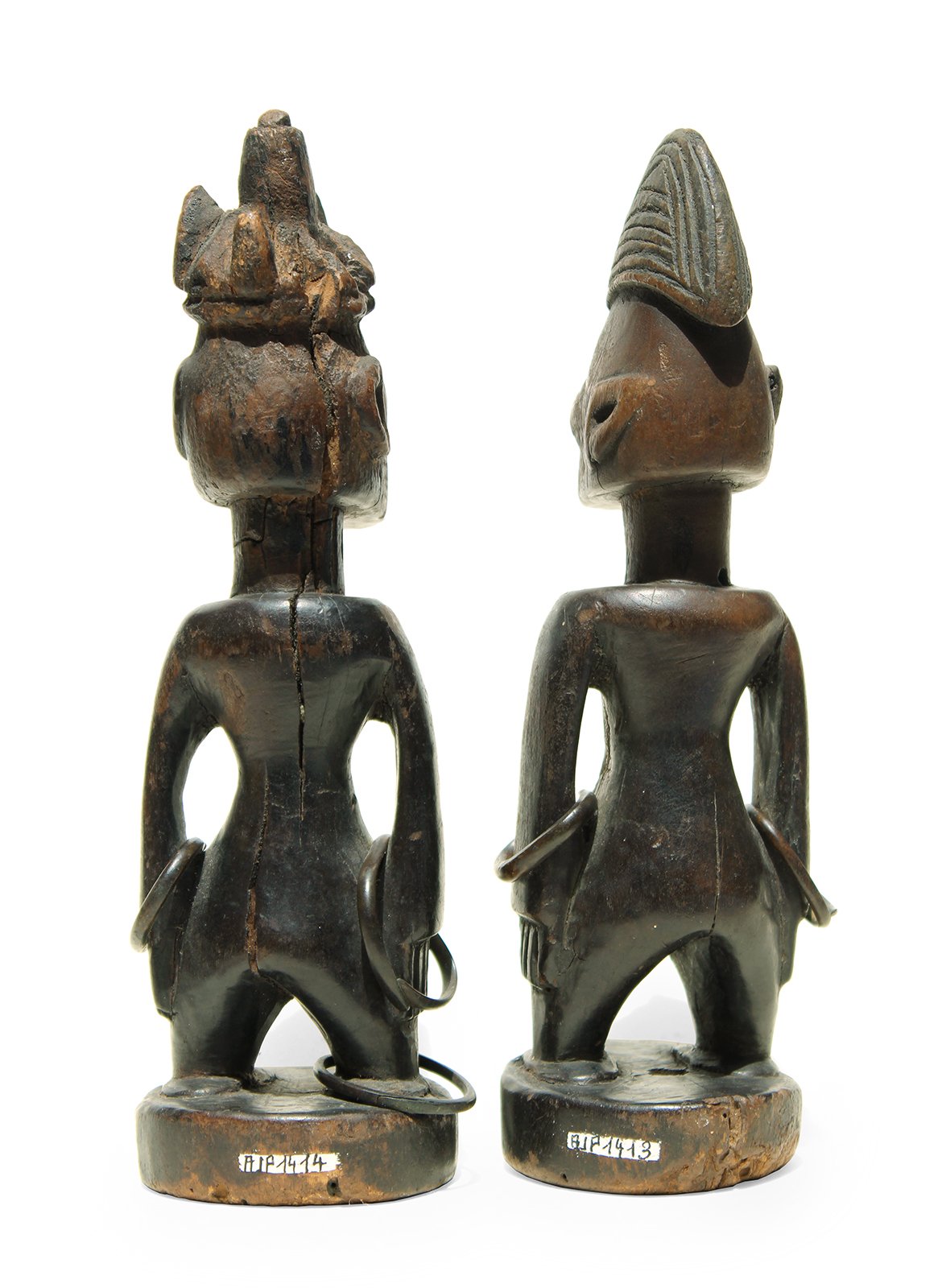Ibeji a pair of Yoruba twin figures
Yoruba peoples
Nigeria
Mid XX century
H. 25 5 m
N° collection AJP 1413 et AJP 1414
In Yoruba culture and spirituality, twins are believed to be magical, and are granted protection by the Orisha Shango. If one twin should die, it represents bad fortune for the parents and the society to which they belong. The parents therefore commission a babalawo to carve a wooden Ibeji to represent the deceased twin, and the parents take care of the figure as if it were a real person. Other than the sex, the appearance of the Ibeji is determined by the sculptor. The parents then dress and decorate the ibeji to represent their own status, using clothing made from cowrie shells, as well as beads, coins, and paint.
Yoruba peoples
Nigeria
Mid XX century
H. 25 5 m
N° collection AJP 1413 et AJP 1414
In Yoruba culture and spirituality, twins are believed to be magical, and are granted protection by the Orisha Shango. If one twin should die, it represents bad fortune for the parents and the society to which they belong. The parents therefore commission a babalawo to carve a wooden Ibeji to represent the deceased twin, and the parents take care of the figure as if it were a real person. Other than the sex, the appearance of the Ibeji is determined by the sculptor. The parents then dress and decorate the ibeji to represent their own status, using clothing made from cowrie shells, as well as beads, coins, and paint.
Yoruba peoples
Nigeria
Mid XX century
H. 25 5 m
N° collection AJP 1413 et AJP 1414
In Yoruba culture and spirituality, twins are believed to be magical, and are granted protection by the Orisha Shango. If one twin should die, it represents bad fortune for the parents and the society to which they belong. The parents therefore commission a babalawo to carve a wooden Ibeji to represent the deceased twin, and the parents take care of the figure as if it were a real person. Other than the sex, the appearance of the Ibeji is determined by the sculptor. The parents then dress and decorate the ibeji to represent their own status, using clothing made from cowrie shells, as well as beads, coins, and paint.




